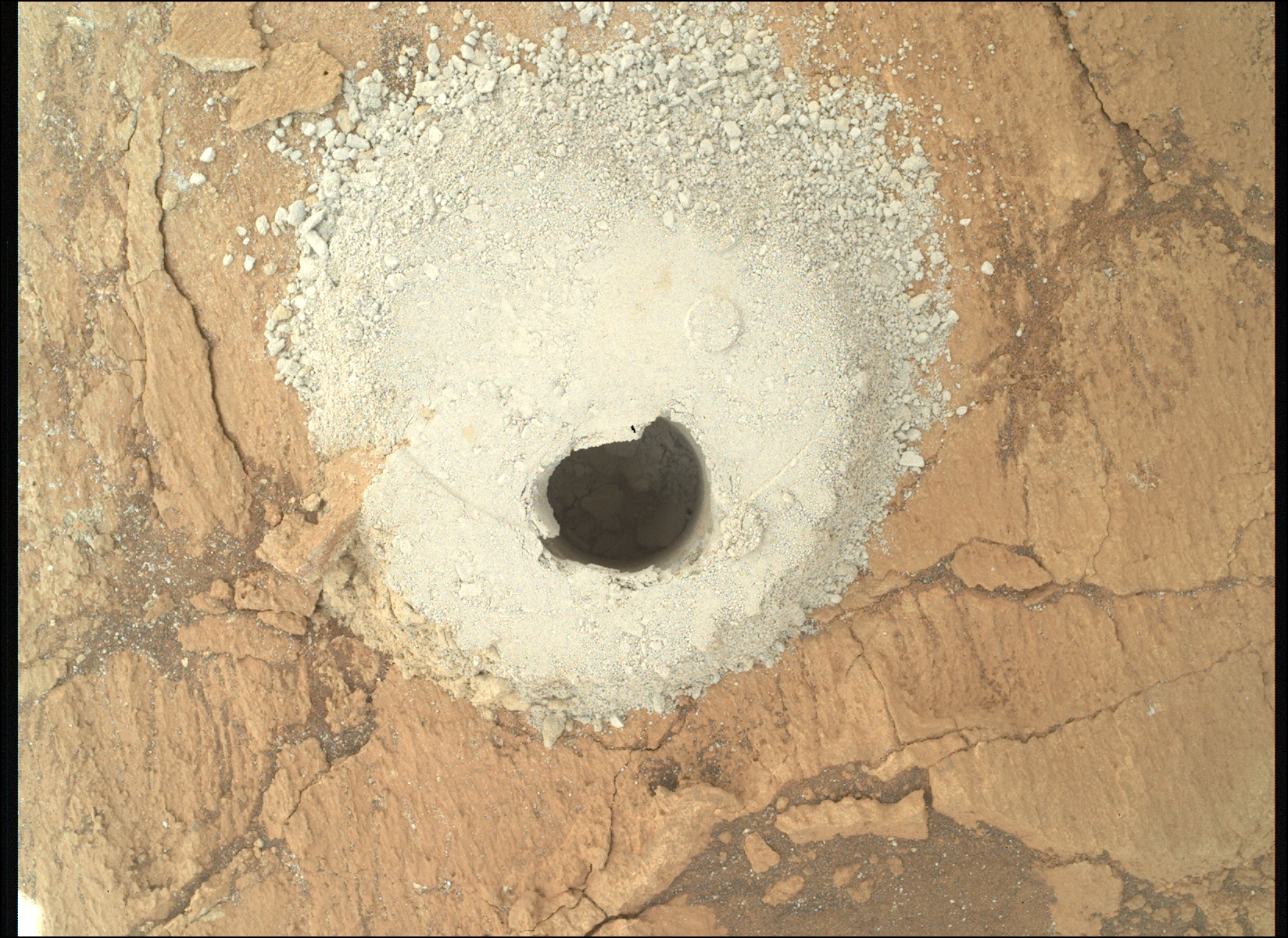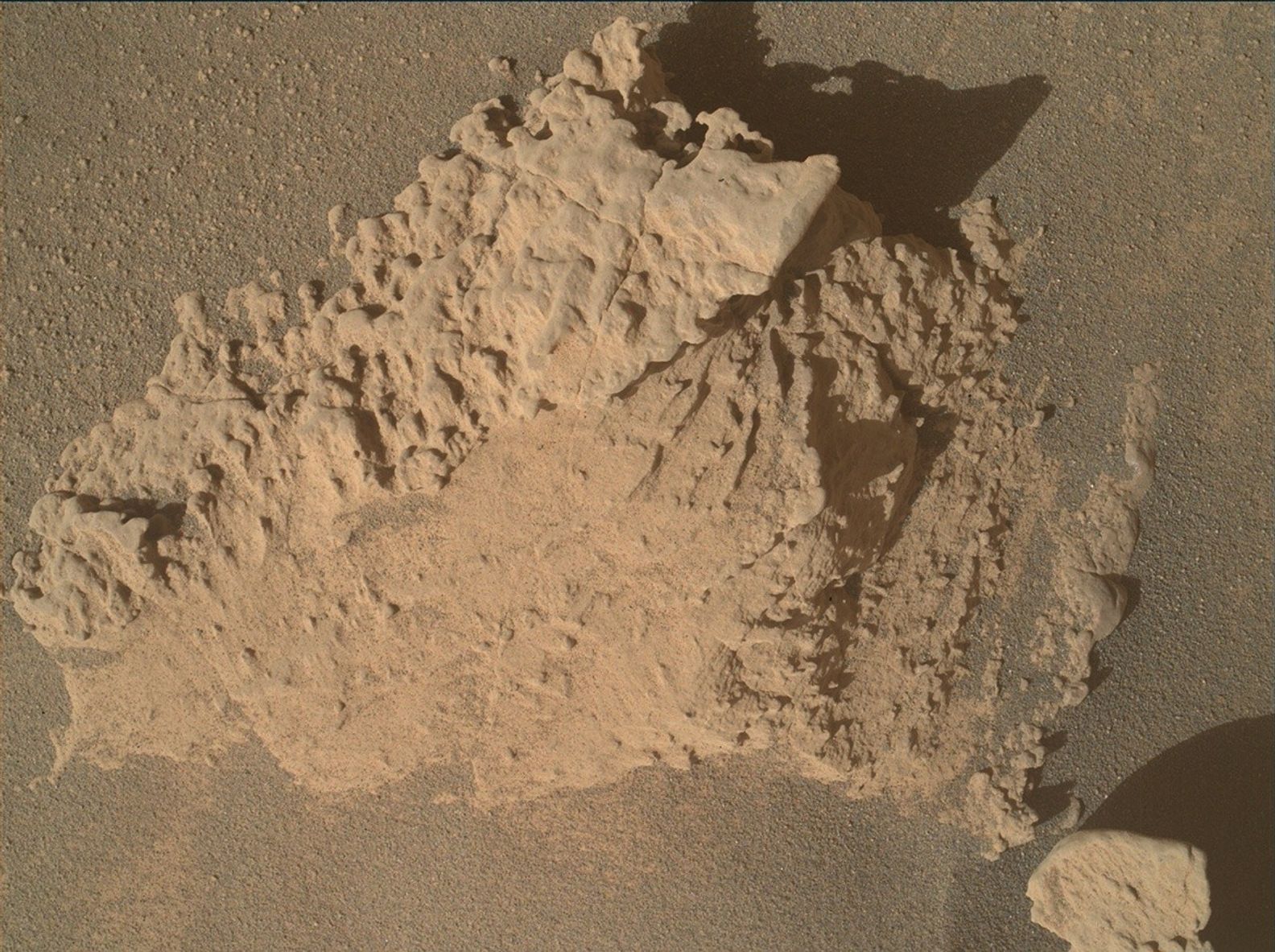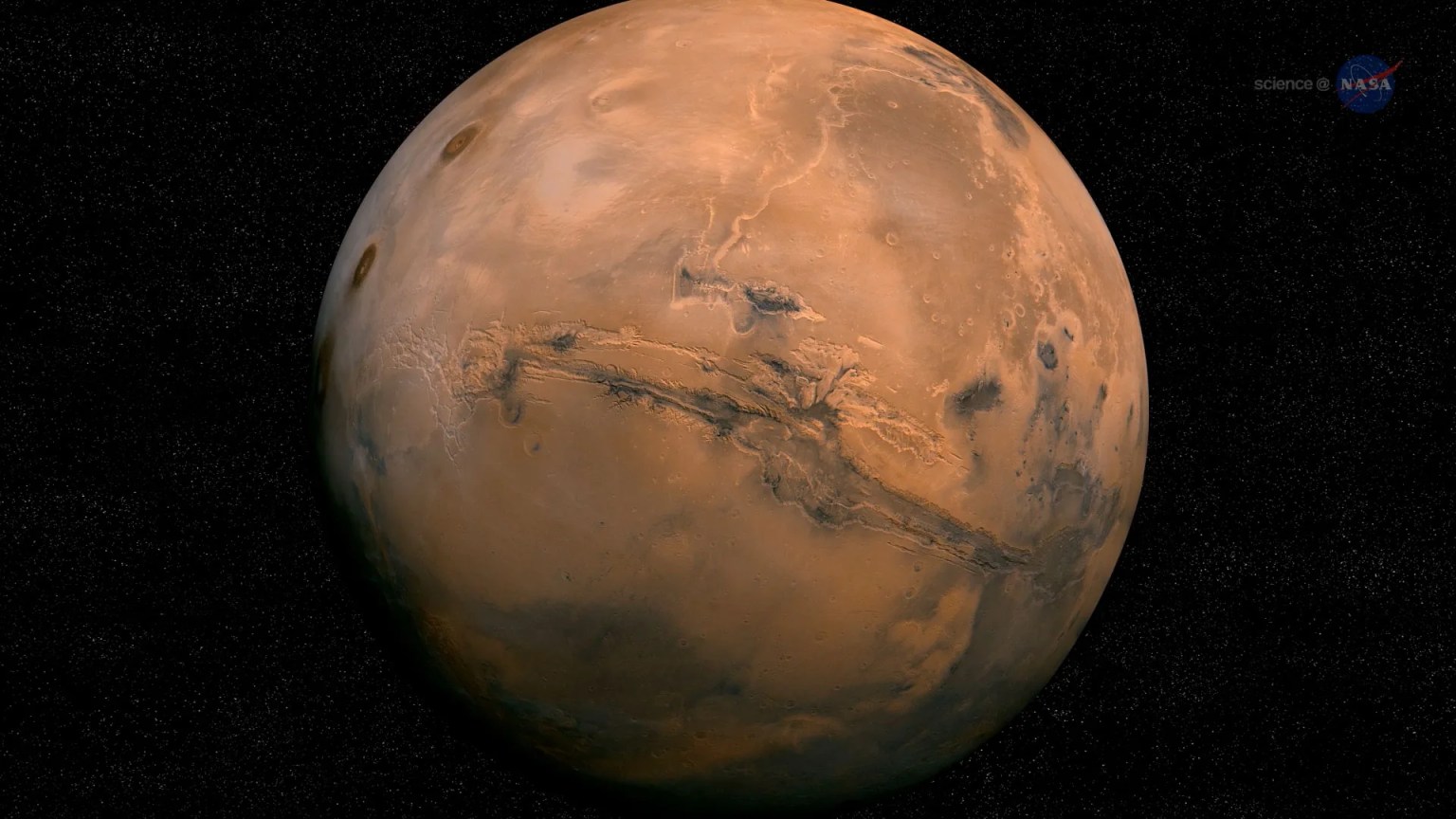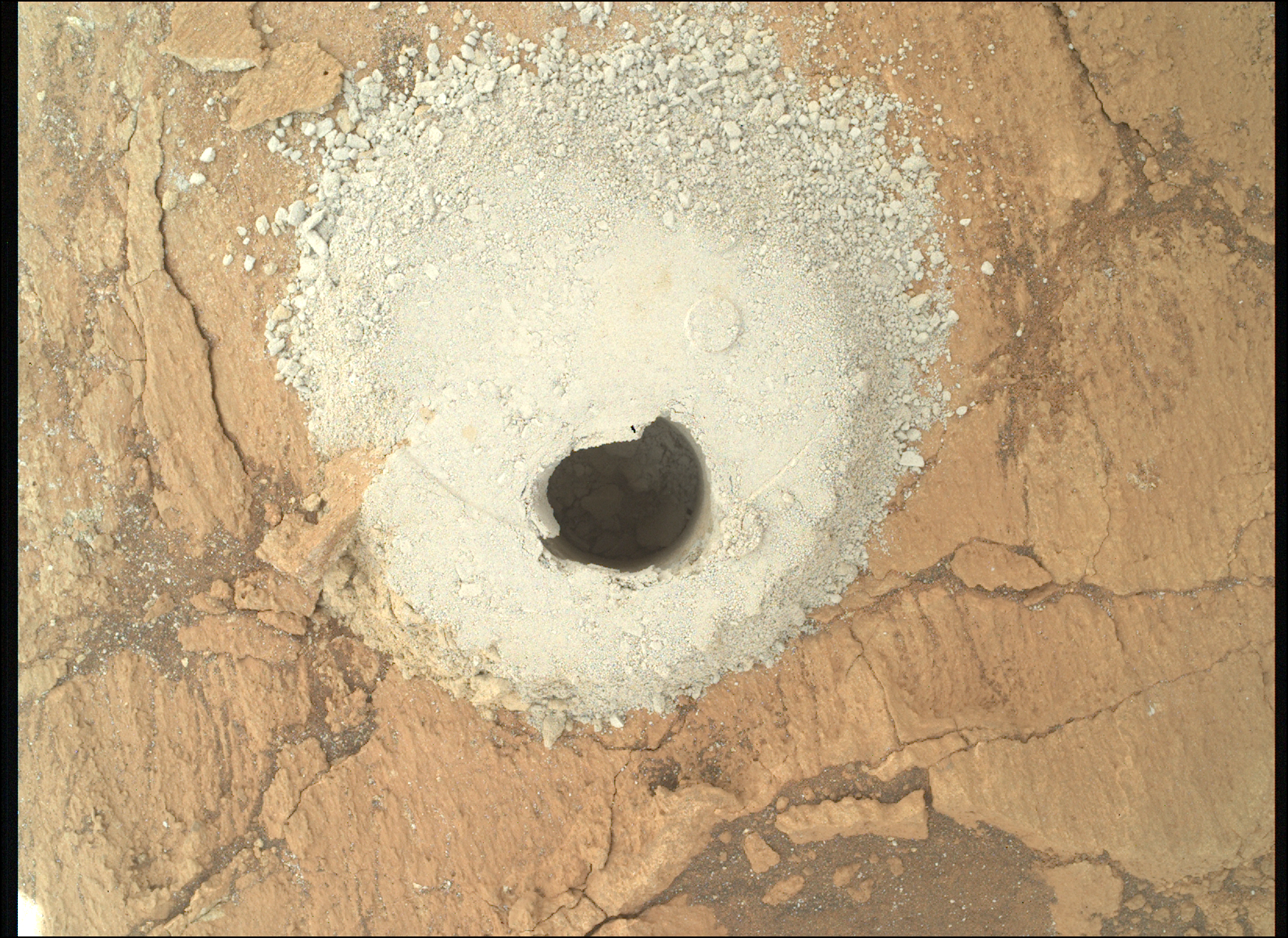
NASA’s Mars Perseverance rover acquired this image using its SHERLOC WATSON camera, located on the turret at the end of the rover’s robotic arm. The view is looking down at a flattened pile of tailings created by the coring of science target “Green Gardens,” so named because it contains serpentine, a mineral often green in color. The rover’s SHERLOC instrument (Scanning Habitable Environments with Raman & Luminescence for Organics & Chemicals) uses cameras, spectrometers, and a laser to search for organics and minerals that have been altered by watery environments and may be signs of past microbial life; in addition to its black-and-white context camera, SHERLOC is assisted by WATSON (Wide Angle Topographic Sensor for Operations and eNgineering), a color camera for taking close-up images of rock grains and surface textures. Perseverance acquired this image on Feb. 20, 2025 — sol 1424, or Martian day 1,424 of the Mars 2020 mission — at the local mean solar time of 13:11:41. This photo was selected by public vote and featured as “Image of the Week” for Week 210 (Feb. 16-22, 2025) of the Perseverance rover mission on Mars.
NASA/JPL-Caltech
Written by Henry Manelski, Ph.D. student at Purdue University
The Perseverance team is always looking for creative ways to use the tools we have on Mars to maximize the science we do. On the arm of the rover sits the SHERLOC instrument, which specializes in detecting organic compounds and is crucial in our search for signs of past microbial life. But finding these organics isn’t easy. The uppermost surface of most rocks Perseverance finds on Mars have been exposed to ultraviolet rays from the sun and the long-term oxidative potential of the atmosphere, both of which have the potential to break down organic compounds. For this reason, obtaining SHERLOC measurements from a “fresh” rock face is ideal. Last week the rover cored a serpentine-rich rock aptly named “Green Gardens,” resulting in a fresh pile of drill tailings. To get this material ready for the SHERLOC instrument, which requires a smooth area to obtain a measurement, the science team did something for the first time on Mars: We smooshed it!
Using the contact sensor of our sampling system, designed to indicate when our drill is touching a rock as it prepares to take a core, Perseverance pressed down into the tailings pile, compacting it into a flat, stable patch for SHERLOC to investigate. This unorthodox approach worked perfectly! The resulting SHERLOC spectral scan of these fresh tailings — which include serpentine, a mineral of key astrobiological interest — was a success. These flattened drill tailings are a great example of how a bit of out-of-the-box (or out-of-this-world!) thinking helps us maximize science on Mars. With this success behind us, the rover is rolling west toward the heart of “Witch Hazel Hill,” where more ancient rocks — and who knows what surprises — await!



Keep Exploring




